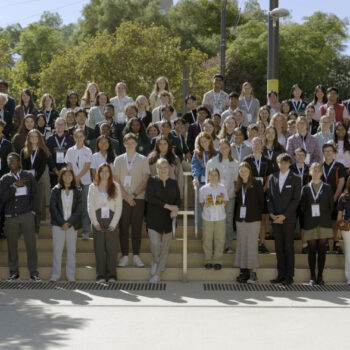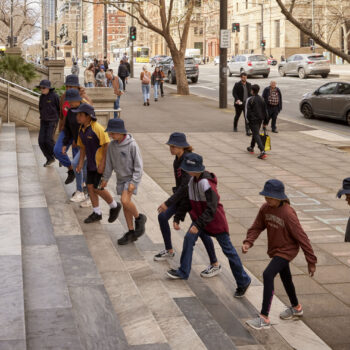Worryingly South Australian children are among the least active in the world. According to SA Health data only 22% of our children and young people report getting the recommended 60 minutes of moderate to vigorous exercise they need every day. Active travel to school is an easy way for kids to become more physically active. However, safety concerns are preventing parents from encouraging their children to take up active travel to and from school and therefore need to be addressed.
Physical activity in children and young people is vital with childhood being one of the most sensitive and therefore best periods of human development in which to promote long-lasting physically healthy behaviours. We know the benefits of physical exercise deliver outcomes that include better mental health and wellbeing, a healthier long-term weight, and long-term prevention of chronic disease.
Being healthy is important to young people who regularly tell me of the relationship between being active and keeping healthy. However, young people also complain that competing demands of homework, extra-curricular activities, and after-school casual jobs mean they have little time left for physical activity.
For teenagers, competing demands on their time between work and school commitments makes it particularly challenging for them to meet recommended physical activity guidelines. As they get older, participation in sports and other physical activities generally drops off. School recess and lunch breaks are short and spent hanging out with friends or in extracurricular activities that usually don’t involve playing or running around.
An active journey travelling to and from school is an easy way for kids of all ages to engage in physical activity that does not require additional time out of their day. Those teens who already exercise regularly often do so as part of their daily routines. They’ve developed habits of walking or cycling to and from school from a young age, and are more likely to help with household chores like walking the dog.
The ability of young people to have an active journey to school is impacted by their proximity to their school and by how easy or safe it is to walk or ride there. Road safety concerns are a significant barrier to walking and cycling in many neighbourhoods, including within Adelaide’s CBD.
Fear of road accidents means parents are reluctant to let their children be outside by themselves. A look at their local area will often lead them to conclude that it is not safe for children to play, cycle, or walk anywhere – let alone to their school.
According to Kidsafe, data on transport injuries shows they are the most common cause of death in children aged 0-14 years and the second most common cause of injury to result in hospital admissions for this age group, with almost 20% of road crashes involving a pedestrian casualty being children.
We know that a large proportion of road traffic accidents occur around the time of school drop-offs and pick-ups when large volumes of traffic and pedestrians are centred on small areas. We also know that fewer pedestrian and bike accidents result in a fatality when the vehicle is going at a slower speed. For this reason the 25kph limits have been introduced in many locations where children are present, and around most of the State’s schools.
Advice from the World Health Organisation (WHO) is that we take action to make our streets usable and safe for our children and young people. This includes reducing the speed limit to 30kph on streets where children live, play, and go to school.
Road accident rates in Adelaide’s CBD are higher than in any other suburb, with SAPOL reporting there were 412 crashes in the City of Adelaide in 2020 alone. In most areas of the city the speed limit is set at 50kph. Despite it being home to 14 schools and over 7,000 school students the 25kph speed limit within 200m of a school zone has not yet been introduced.
This Road Safety Week I am calling on all SA local councils and the Department for Infrastructure and Transport to create more safe ways to school. This involves ensuring that all footpaths, cycleways, and pedestrian crossings within the immediate area of all SA schools, shops, and parks are made safe with provision for good street lighting and effective signage included.
Prioritising creation of safe active travel corridors for children and young people will allay parental concerns and help remove barriers to achieving ‘built in’ physical activity into kid’s daily routines. We can easily begin by converting roads around all schools, shops, and parks to the 30kph or less guidelines recommended by WHO, and by immediately introducing the 25kph zones for all schools in Adelaide’s CBD.




